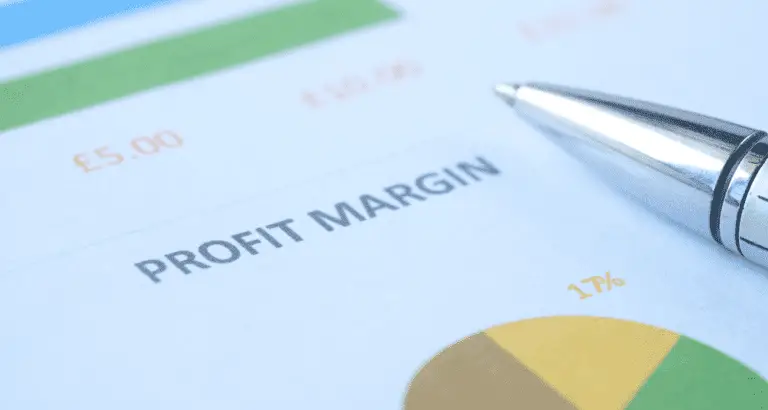What Is The Value Per Key Of A Hotel?
In the ever-evolving hospitality industry, understanding the value per key of a hotel is crucial for investors, owners, and operators alike. This metric serves as a powerful tool for evaluating the financial performance and potential of a hotel property, guiding strategic decisions and maximizing returns.
If you’re short on time, here’s a quick answer to your question: The value per key of a hotel is a metric that represents the total value or selling price of a hotel divided by the number of guest rooms (keys) it has.
It provides a standardized measure for comparing the relative value of different hotel properties, taking into account factors such as location, amenities, occupancy rates, and revenue streams.
In this comprehensive article, we will delve into the intricacies of the value per key metric, exploring its calculation methods, factors influencing its value, and its significance in the hotel industry.
We will also examine real-world examples and provide insights into how this metric can be leveraged to make informed investment decisions and optimize hotel operations.
Understanding the Value Per Key Metric
Definition and Calculation
Value Per Key, often abbreviated as VPK, is a widely used metric in the hotel industry that measures the value or profitability of a hotel property relative to the number of rooms it has. It is calculated by dividing the total revenue or selling price of a hotel by the number of keys (rooms) it possesses.
In other words, VPK = Total Revenue or Selling Price / Number of Keys. A higher VPK generally indicates a more valuable and profitable hotel property.
Importance in the Hotel Industry
The Value Per Key metric is crucial in the hotel industry for several reasons. Firstly, it serves as a valuable benchmark for comparing the performance and profitability of different hotel properties, even if they vary in size or number of rooms.
Secondly, it assists investors, developers, and hotel owners in making informed decisions about acquiring, selling, or renovating hotel properties. A high VPK can signal a potentially lucrative investment opportunity, while a low VPK may indicate the need for improvements or strategic changes.
Additionally, VPK plays a significant role in valuation and financing processes, as lenders and investors often consider this metric when evaluating the potential returns and risks associated with a hotel property.
Factors Influencing Value Per Key
Several factors can influence the Value Per Key of a hotel property, including:
- Location: Hotels in prime locations, such as major cities, tourist destinations, or business hubs, tend to command higher VPKs due to higher demand and room rates.
- Brand and Reputation: Well-established and reputable hotel brands often have higher VPKs due to their strong brand recognition, loyalty programs, and consistent service standards.
- Hotel Amenities and Services: Properties offering extensive amenities, such as restaurants, spas, meeting facilities, and recreational activities, can generate higher revenues and, consequently, higher VPKs.
- Market Conditions: Economic factors, travel trends, and supply-demand dynamics in a particular market can significantly impact hotel performance and VPKs.
- Property Age and Condition: Newer or recently renovated hotels typically have higher VPKs compared to older properties that may require significant investments for upgrades or renovations.
It’s worth noting that the Value Per Key metric should be analyzed in conjunction with other financial and operational metrics to gain a comprehensive understanding of a hotel’s performance. For instance, sources like HVS and STR provide valuable insights and data on hotel valuations and industry trends.
The Value Per Key metric is a powerful tool for evaluating the profitability and potential of hotel properties, making it an indispensable metric in the dynamic and competitive hotel industry.
Location: A Driving Force Behind Value Per Key
When it comes to determining the value per key of a hotel, location plays a pivotal role. The property’s proximity to popular attractions, amenities, and its positioning within an urban or resort destination can significantly impact its revenue potential and overall value.
Let’s delve into the nuances of how location influences this crucial metric.
Urban vs. Resort Destinations
Hotels situated in bustling urban centers tend to command a higher value per key compared to their resort counterparts. According to Hotel News Resource, urban hotels in major cities like New York, London, and Tokyo can fetch average daily rates (ADRs) that are 30-50% higher than resort properties.
This premium is driven by the constant demand from business travelers, tourists seeking city experiences, and the limited availability of hotel rooms in densely populated areas.
On the flip side, resort destinations often rely heavily on leisure travel and seasonality. While they may experience peak periods with high occupancy rates, their value per key can fluctuate significantly throughout the year.
Resorts in tropical paradises or ski destinations typically command higher rates during peak seasons but struggle to maintain consistent demand during off-peak times 😎.
Proximity to Attractions and Amenities
Hotels located in close proximity to major attractions, business districts, or transportation hubs tend to have a higher value per key. Travelers are willing to pay a premium for the convenience of being within walking distance or a short commute from their desired destinations.
For instance, hotels near iconic landmarks like the Eiffel Tower in Paris or Central Park in New York City can command significantly higher rates due to their prime locations.
Similarly, properties situated near major convention centers, sports arenas, or corporate headquarters benefit from the consistent influx of business travelers and event attendees. These hotels can leverage their strategic locations to justify higher room rates and achieve higher occupancy levels, ultimately boosting their value per key 💰.
Market Demand and Competition
The value per key of a hotel is also heavily influenced by the supply and demand dynamics within its specific market. In high-demand destinations with limited hotel inventory, properties can command premium rates, resulting in a higher value per key.
Conversely, in oversaturated markets with an abundance of hotel rooms, the competition may drive down room rates, negatively impacting the value per key.
According to STR Global, a leading provider of hospitality data and analytics, hotels in markets with a balanced supply and demand ratio tend to achieve higher revenue per available room (RevPAR) and, consequently, a higher value per key.
Monitoring market trends, occupancy levels, and competitive pricing strategies is crucial for maximizing a hotel’s value potential 📈.
Hotel Characteristics and Amenities
Brand Affiliation and Reputation
A hotel’s brand affiliation and reputation play a crucial role in determining its value per key. Well-established and highly regarded brands, such as Marriott, Hilton, and Hyatt, often command higher room rates and occupancy levels.
These brands are trusted by travelers for their consistent quality, rewards programs, and brand recognition. According to a study by STR Global, hotels affiliated with major brands typically achieve higher average daily rates (ADRs) and revenue per available room (RevPAR) compared to independent hotels.
Brand reputation is also influenced by online reviews and ratings on platforms like TripAdvisor, Google Reviews, and Yelp. Positive reviews can significantly boost a hotel’s value per key, as potential guests are more likely to book rooms at highly-rated properties.
On the other hand, negative reviews can tarnish a brand’s image and lead to lower occupancy rates and revenue. As stated in a RevFine report, a one-point increase in a hotel’s online review score can lead to a 9% increase in revenue per available room.
Room Quality and Amenities
The quality of a hotel’s rooms and the amenities offered are essential factors that influence its value per key. Guests are willing to pay more for well-appointed rooms with modern furnishings, comfortable bedding, and high-end finishes.
Additionally, in-room amenities such as flat-screen TVs, coffee makers, mini-fridges, and high-speed internet access are expected by today’s travelers.
Beyond the rooms themselves, hotels that offer exceptional on-site amenities like restaurants, bars, fitness centers, spas, and swimming pools can command higher room rates. These amenities provide added value and convenience for guests, enhancing their overall experience.
According to a Hotel News Resource article, hotels with full-service amenities can achieve RevPAR premiums of up to 50% compared to limited-service properties.
Ancillary Revenue Streams
Savvy hotel operators recognize the importance of ancillary revenue streams in boosting their overall value per key. These additional sources of revenue can include food and beverage outlets, meeting and event spaces, parking fees, resort fees, and on-site retail shops.
By maximizing these revenue opportunities, hotels can increase their profitability and overall asset value.
For example, a hotel with a popular restaurant or bar can generate significant revenue from both guests and local patrons. Similarly, hotels with extensive meeting and event facilities can capitalize on the lucrative corporate and social event market.
According to a Hotel News Resource study, hotels with strong ancillary revenue streams can achieve up to 20% higher total revenue per available room (TRevPAR) compared to properties without these additional revenue generators.
Maximizing Value Per Key: Strategies and Best Practices
In the dynamic and competitive world of hospitality, maximizing the value per key has become a crucial objective for hotel owners and operators. The value per key, often referred to as RevPAR (Revenue Per Available Room), is a critical metric that measures a hotel’s profitability and efficiency.
By implementing effective strategies and best practices, hoteliers can unlock the full potential of their properties and drive sustainable growth.
Revenue Management and Pricing Strategies
Effective revenue management and pricing strategies are at the core of maximizing value per key. By leveraging data analytics and demand forecasting tools, hotels can optimize room rates and inventory allocation to capture maximum revenue.
Revionics, a leading provider of pricing solutions, emphasizes the importance of dynamic pricing and real-time rate adjustments based on market demand. Additionally, implementing revenue management techniques such as overbooking, length-of-stay controls, and channel management can help hotels maximize revenue while ensuring guest satisfaction.
According to a study by Kalibri Labs, hotels that effectively leverage revenue management strategies can see an average RevPAR increase of 8-12% compared to those that do not. 😲 This underscores the significant impact that strategic pricing and revenue management can have on a hotel’s bottom line.
Cost Optimization and Operational Efficiency
While maximizing revenue is crucial, controlling costs and optimizing operational efficiency are equally important in driving value per key. Hotels should continuously evaluate their expenses and implement cost-saving measures without compromising guest experience.
This can involve implementing energy-efficient practices, streamlining supply chain management, leveraging technology for automated processes, and fostering a culture of continuous improvement.
According to a study by McKinsey & Company, hotels that proactively manage costs and drive operational efficiency can achieve cost savings of up to 20%. 🤑 Furthermore, the adoption of advanced technologies, such as artificial intelligence and machine learning, can help hotels optimize staffing levels, reduce waste, and improve overall operational efficiency.
Asset Repositioning and Renovations
In the ever-evolving hospitality landscape, asset repositioning and strategic renovations can be game-changers in maximizing value per key. By staying attuned to changing guest preferences and market trends, hotels can reposition their offerings to appeal to new target segments or adapt to emerging travel patterns.
This may involve renovating guest rooms, upgrading amenities, or introducing new services and experiences that resonate with the desired clientele.
According to HVS, a leading hospitality consulting firm, strategic renovations can result in RevPAR increases of up to 20% for upscale hotels and 10% for midscale properties. 🎉 Furthermore, asset repositioning can unlock new revenue streams, attract higher-paying guests, and ultimately drive greater value per key.
By embracing these strategies and best practices, hoteliers can unlock the true potential of their properties and maximize the value per key. It’s an ongoing journey that requires continuous adaptation, innovation, and a relentless pursuit of excellence in guest experience and operational efficiency.
Conclusion
The value per key of a hotel is a powerful metric that encapsulates the intrinsic value and potential of a hotel property. By understanding the factors that influence this metric, investors, owners, and operators can make informed decisions regarding acquisitions, dispositions, and operational strategies.
From location and amenities to revenue management and cost optimization, each aspect plays a crucial role in shaping the value per key. By leveraging this metric effectively, stakeholders can identify opportunities for value creation, maximize returns, and stay ahead in the competitive hospitality landscape.
As the industry continues to evolve, the value per key will remain a vital tool for assessing hotel performance and guiding strategic decision-making. By embracing data-driven insights and best practices, industry professionals can unlock the full potential of their hotel assets and drive sustainable growth in an ever-changing market.







